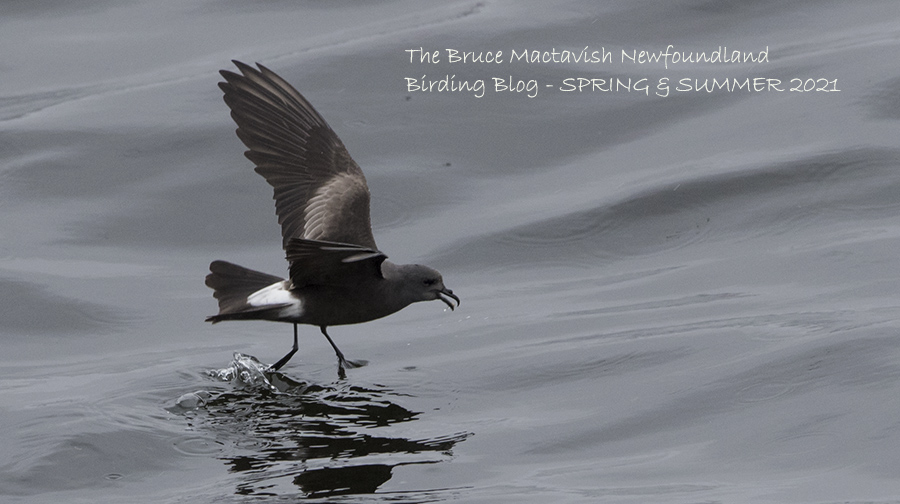Jon Joy found a group of three Black-tailed Godwits at Bonavista on 21 May. All were dull looking birds, perhaps first year birds, maybe adult females? They stayed a few days. Black-tailed Godwit is very rare but is the second most regular Icelandic shorebird after the Golden Plover to occur in the province. Usually arriving as singles in late April to mid May with most being very brightly coloured birds assumed to be males. Three ties the record for the largest flock so far.
Black-tailed Godwit # 1 at Bonavista 21 May 2016
The other two Black-tailed Godwits at Bonavista on 21 May 2016.
On 22 May Ethel Dempsey birding with Alison Mews and Cape Race flushed a white-rumped Whimbrel from the grass by the lighthouse. The species (!!!it should be a full species!!!) is less than annual in the province and is rarer than Black-tailed Godwit.
The European Whimbrel was very alert and wary. Standing on the ground there is somewhat more white in the upper parts creating a light checkered appearance but it is probably not safely separable from the North American Whimbrel until it flies. 22 May 2016.
The bright white back ground to the underwing is striking compared to the dull brown of a North American Whimbrel. 22 May 2016.
The tell all white wedge up the back is always exciting to see in the field. 22 May 2016.
Catherine Barrett got the surprise of her life driving home on 26 May seeing a boldly marked male Ruff in a small wet patch close beside the Back Line Road, Goulds. It stayed less than two hours. It was figidty and never fed. It seemed like it just dropped in out of the storm for a rest before continuing its journey. This was the second male Ruff of the month. The other being in Little Catalina in mid May. The occurrences of Ruff are unpredictable in Newfoundland. It is just about annual in spring and fall with adult males being in the minority.
A Ruff in The Goulds 26 May 2016.
A Ruff in The Goulds 26 May 2016.
A Ruff in The Goulds 26 May 2016.
European Golden-plover can occur by the hundreds in spring in Newfoundland with the majority happening 20 April to 10 May. 2016 was not one of those springs with just a single bird in mid April near Lumsden. Therefore it was doubly surprising that a late individual was turned up by Alvan Buckley and Catherine Barrett on 28 May at Biscay Bay, Avalon Peninsula.
European Golden-Plover 29 May 2016.
European Golden-Plover 29 May 2016.
American Robin and European Golden-Plover 29 May 2016.





























